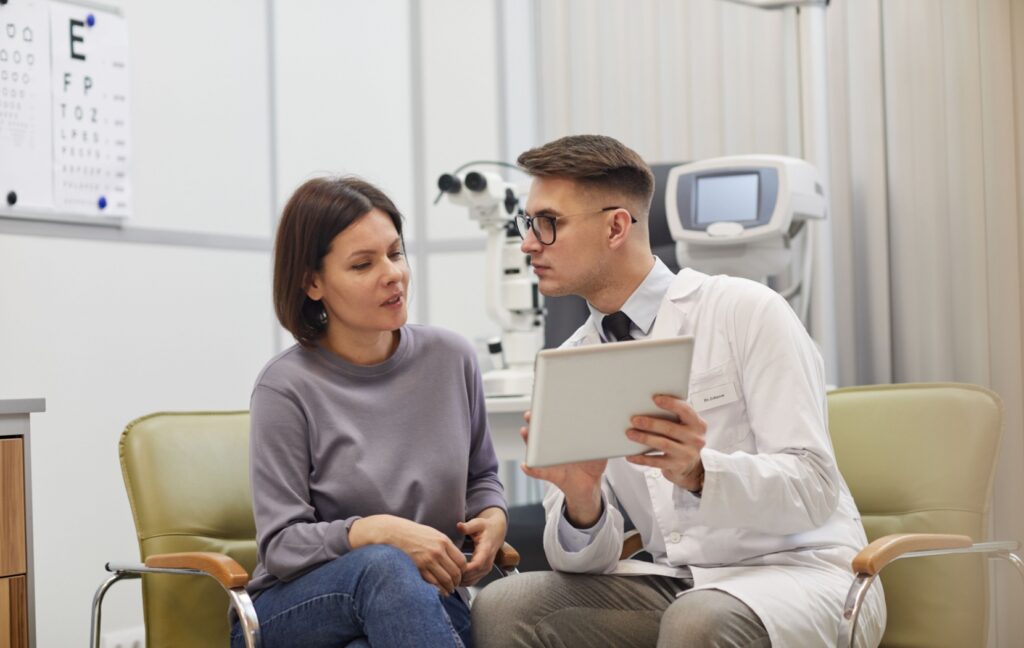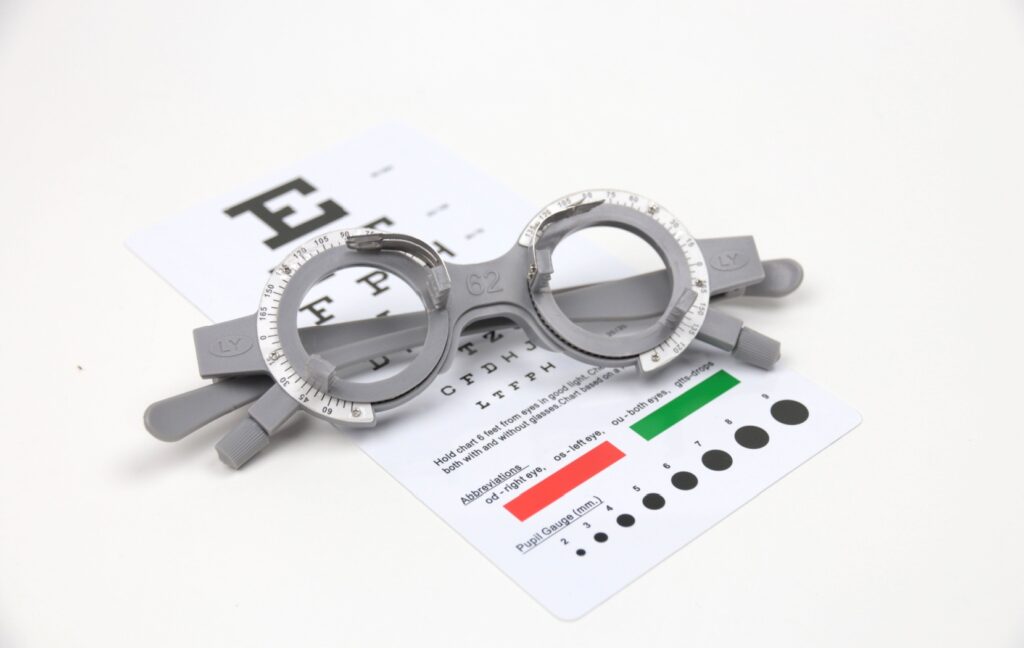Walking into an eye exam, you might wonder how your optometrist can precisely determine your vision correction needs through a series of tests and measurements. The process involves techniques and equipment that have been refined over decades to ensure accuracy and comfort.
Understanding how your prescription is calculated can help you feel more confident during your eye exam and better appreciate the expertise behind your vision care. At Total Vision Chino Hills, we believe informed patients make better decisions about their eye health.
The Foundation: Understanding Refractive Errors
Before diving into the examination process, it’s essential to understand what optometrists are measuring. Refractive errors occur when the shape of your eye prevents light from focusing correctly on the retina, resulting in blurred vision.
The most common refractive errors include myopia (nearsightedness), hyperopia (farsightedness), astigmatism (irregular corneal shape), and presbyopia (age-related near vision decline). Each condition requires specific correction values that your optometrist will determine through precise measurements.
Your prescription will include several key components: sphere (overall lens power), cylinder (astigmatism correction), axis (astigmatism orientation), and potentially add power (for bifocals or reading glasses). These measurements work together to create a lens that properly focuses light on your retina.
Initial Assessment & Case History
Your prescription determination begins before any testing equipment is used. Your optometrist will conduct a thorough case history, asking about your current vision concerns, previous prescriptions, lifestyle needs, and any symptoms you’ve experienced.
This information provides crucial context for interpreting test results. For example, if you spend significant time working on computers, your optometrist will pay special attention to your intermediate and near vision needs. Similarly, if you participate in sports, distance vision clarity becomes particularly important.
The case history also reveals any medications you’re taking, health conditions that might affect your vision, and a family history of eye problems. These factors can influence both your current prescription needs and future eye health considerations.
Objective Refraction: The Starting Point
The objective refraction process begins with autorefraction, where an automated instrument measures how light changes as it enters your eye. This computerized assessment provides an initial estimate of your refractive error without requiring any input from you.
Your optometrist may perform retinoscopy, a technique where they shine a light into your eye and observe how it reflects off your retina. By moving the light and observing the reflection patterns, they can determine your approximate prescription with remarkable accuracy.
These objective measurements serve as the foundation for more refined testing. While highly accurate, they represent starting points that will be fine-tuned through subjective testing to ensure optimal vision and comfort.
Subjective Refraction: Fine-Tuning Your Prescription
The subjective refraction process is what most people associate with eye exams—looking through the phoropter (the large instrument with multiple lenses) and responding to “Which is better, one or two?” questions.
During this phase, your optometrist systematically adjusts lens powers while you view an eye chart, typically positioned 20 feet away. They’ll test different sphere powers to correct nearsightedness or farsightedness, then address any astigmatism by adjusting cylinder power and axis orientation.
Special Considerations for Contact Lens Prescriptions
Contact lens prescriptions require additional measurements beyond those needed for eyeglasses. Since contacts sit directly on your eye’s surface, your optometrist must measure your corneal curvature, eye surface diameter, and tear film quality.
Keratometry measurements determine your cornea’s curvature, helping select contact lenses with appropriate base curves for proper fit and comfort. Your optometrist will also measure your pupil and iris diameter to ensure proper lens sizing.
Contact lens prescriptions often differ slightly from eyeglasses prescriptions due to the different distance between the corrective lens and your eye. The closer positioning of contacts may require adjustments to achieve the same visual correction as glasses.
Advanced Diagnostic Technology
Modern optometry practices utilize sophisticated technology to enhance prescription accuracy. Corneal topography creates detailed maps of your cornea’s surface, revealing irregularities that might require specialized correction.
Wavefront aberrometry measures how light waves travel through your entire optical system, detecting subtle imperfections that traditional methods might miss. This technology enables more precise prescriptions and can identify candidates for specialized lens designs.
Optical coherence tomography (OCT) provides detailed cross-sectional images of your retina, helping optometrists understand how eye health might impact your prescription needs. These advanced tools complement traditional examination methods to ensure comprehensive vision care.

The Final Prescription: Bringing It All Together
After completing all measurements and tests, your optometrist analyzes the collected data to determine your final prescription. This process involves balancing multiple factors: achieving maximum visual acuity, ensuring comfortable binocular vision, and addressing your specific lifestyle needs.
For patients requiring multifocal corrections, additional considerations include the type of progressive lens design, segment height for lined bifocals, or multifocal contact lens selection. Your optometrist will explain these options and help you choose the best solution for your needs.
The final prescription represents a careful balance of scientific measurement and clinical expertise, customized to provide you with clear, comfortable vision for your daily activities.
Your Partner in Optimal Vision Care
Understanding how optometrists determine your prescription reveals the scientific precision and clinical expertise behind your vision correction. This knowledge can help you participate more effectively in your eye exams and make informed decisions about your vision care options.
At Total Vision Chino Hills, our experienced optometrists combine state-of-the-art technology with personalized care to ensure your prescription meets your unique needs. Schedule your comprehensive eye examination today to experience the difference that expert care and advanced technology can make in your vision health.





